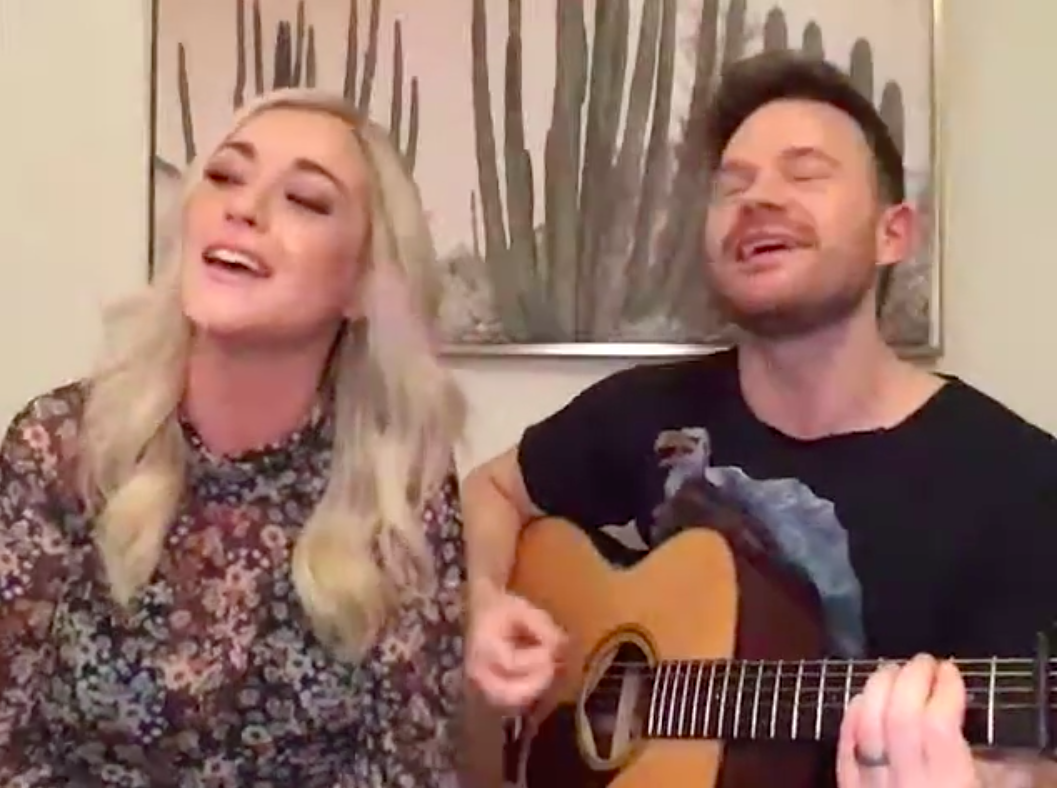Derek Drye strummed his guitar and looked into the camera.
“Are we live?” said Katelyn Drye, his wife and the other half of the country music duo, The Dryes, from the couch in their Nashville home.
“I don’t know … there we go.”
“Are we live?” she asked again.
“Yea,” he said. “We did it. Awesome. All right, let’s get some people connected here.”
“Thank you, Fox 8, for joining us and putting this on your page.”
He took a sip of his bourbon, she took a sip of her tequila soda, and the two started their first song, “Life is Crazy.”
“Anything you wanna say?” Derek Drye asked his wife.
“I would just dedicate it to right now, all the crazy things happening,” she said.
The Dryes played the concert from their home, and WGHP in High Point, North Carolina, livestreamed it online and on Facebook. The hourlong concert was part of a Home Concert Series the station created to bring music to people and help spread the work of local musicians who aren’t out playing gigs right now.
“We are doing a lot of positive stories to balance out the gloom and doom,” emailed Stephanie Doyle, executive producer of digital media.
This is something any local newsroom could do along with local musicians and bands. Two more ideas to borrow from WGHP: A small business spotlight and a feature highlighting local people who are making a difference right now as their community deals with the coronavirus.
Other than one summer in high school, I’ve never listened to much country music, but I listened to every minute of this Home Concert while writing today’s roundup on how local newsrooms are covering the coronavirus and the resources that can help them do it. (The “Free Falling” cover is particularly good.)
Like The Dryes said, life is crazy.
Here’s more (and please keep sending them. We’re gonna do this every weekday.):
The Peninsula Pulse in Baileys Harbor, Wisconsin, turned its homepage into a community portal to host resources, a place to ask for help, a place to volunteer, useful links, a way to donate locally, and a directory of restaurants and retail offering pick-up service.
Myles Dannhausen told Poynter that the publication worked with a local web developer and the Door County Fire Chiefs Association “to create the Door County Emergency Support Coalition … Meanwhile, we’re creating daily podcast updates with local leaders, medical experts, situation reports, and interviews with people going through the emergency elsewhere. This week, we created a special print edition and mailed it free to every mailbox in the county for the first time.”
This publication has a staff of six.
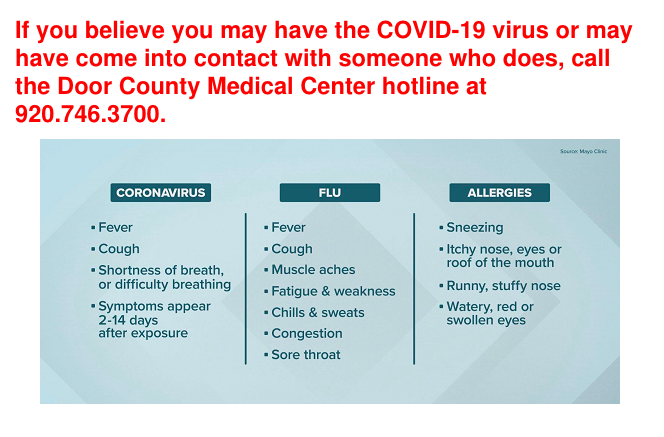
Last week, Chalkbeat, which covers education around the country, embarked on a one-day, cross-bureau collaboration “to capture the reality of school closures for parents, educators, school staff, and students. Closing schools has upended the daily rhythms of their lives in ways that we are only now starting to understand; reporters in our seven bureaus collected vignettes to help further that understanding,” Caty Green told Poynter.
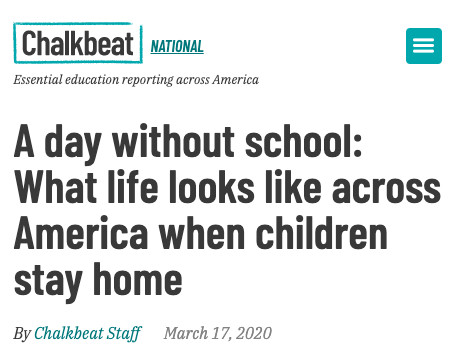
The (Batavia, New York) Daily News and Livingston County News in Geneseo, New York created an interactive map “highlighting ‘community support services’ in the four counties we cover,” Ben Beagle told Poynter. “This includes food pantries, school food distribution, medical and mental health services. We will continue to expand it.”
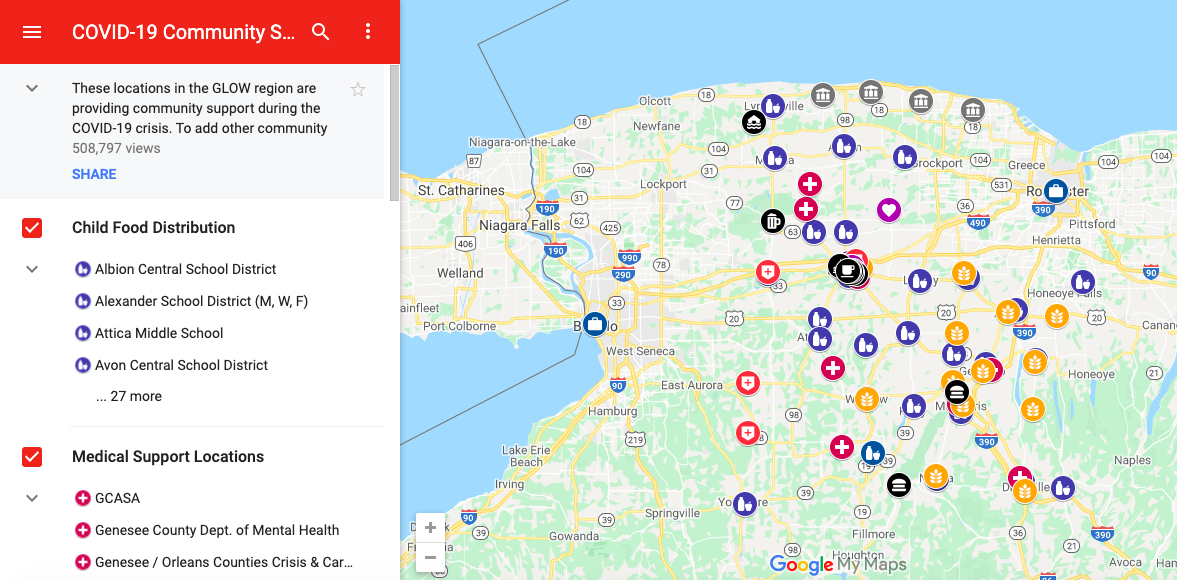
One more to share, and this one made me smile even though things are bad. I told you yesterday about the Eagle Radio newsrooms that got more than 350 local businesses to take the pledge to follow World Health Organization guidelines to protect people. They rolled out new logos on Thursday.
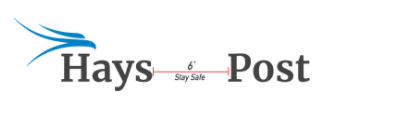
First draft:
Last week my 12-year-old looked at me and said, “Mom, we’re living through history right now.” “Well, we’re always living through history,” I told him. “Sometimes it’s just a lot easier to see it.” Because we’re in one of those times, I’m going to try to share local front pages now and then. Here’s one, via Newsuem:
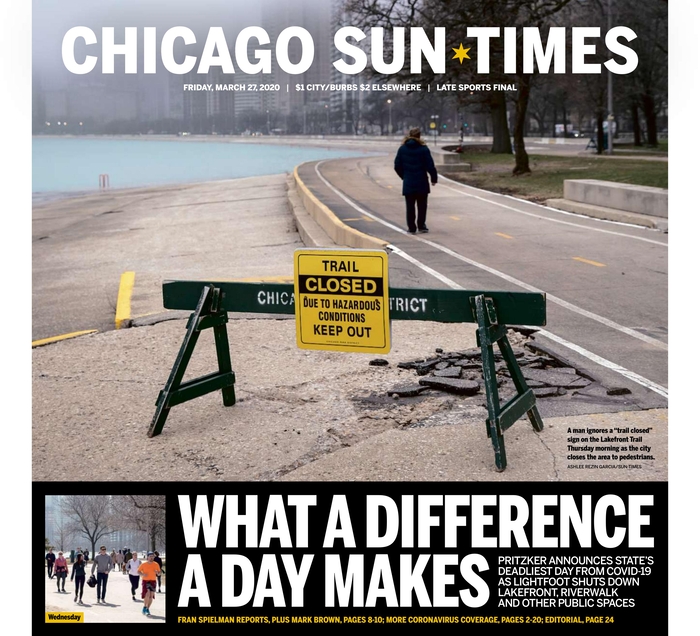
Help wanted:
Here are some resources available to local journalists and newsrooms.
- The American Press Institute pulled together this list of free content, tools and funding for newsrooms covering the coronavirus.
- LION Publishers has a free webinar on “How to manage your local news business in the face of a pandemic.” The hourlong video on April 3 features media consultants Tim Griggs and Ryan Tuck. RSVP to apply. This feels promising: “By the end of this call, you’ll feel more clear-eyed and confident on how to plan for a variety of scenarios to ensure your businesses’ financial sustainability.”
- LION is also building a public database of local, independent, digital newsrooms in the U.S. and Canada. Is that you? Take this 20-minute survey by April 30.
- Check out this webinar on how to “ramp up your digital revenue strategy, fast.”
- Join this live debate on “The Publishing Industry. The Crisis. The Future.” from Piano on April 7.
- IRE has a great lineup of webinars and recorded trainings to help journalists during these tough times, including “TV and radio broadcasting from home” on Saturday, March 28; “Fighting for open records during the COVID-19 crisis” on Wednesday, April 1; plus the previously recorded “How journalists can fight stress from covering COVID-19” with my coworker Al Tompkins. If your newsroom wants to set up a training like this with Tompkins, please reach out here. Here are two tips I love from this webinar. First, reach out to your coworkers, don’t wait for them to do it. “It’s really important that you recognize that these informal conversations that we have every day are part of human connection, and it’s important for us to have a personal conversation with people.” Also, if you’re prone to addictive behavior of any kind, including overeating, recognize that right now. To avoid the coronavirus 10: Pack your lunch and do not eat at your workspace.
- Cronkite News Lab pulled together some great resources for newsroom leaders.
- And tune in on Monday, March 30 for SciLine’s webinar on Social Isolation, Mental Health and COVID-19.
- Do you have a live training journalists can take part in? Let us know here.
Layoffs and closures:
The work of local newsrooms is critical right now, right as the economy, and those same newsrooms, are taking a huge hit. We don’t want to lose sight of the day-to-day story of what’s happening in local newsrooms. Know of layoffs or closures? Please send them to me and I’ll include them here.
- Check out my colleague Rick Edmond’s piece on how news associations are planning to get through this crisis. He wrote “My summary: It could all change for worse or for better in a week. Right now we have an industry down on its heels, but not down and out.”
- The Durango Herald in Colorado laid off five people last week.
- The Warwick Beacon in Rhode Island went from twice-weekly publication to once-weekly and had eight layoffs, including the publisher, according to The Providence Journal.
- Josh Benton writes for Nieman Lab that city magazines could follow alt-weeklies as the next to face big troubles.
- And in Pennsylvania, Trib Total Media combined two print editions and laid off staff, according to the Pittsburgh Post-Gazette.
Bright spots:
- American Press Institute’s Kevin Loker has a great tweet thread about all the ways local newsrooms are supporting local businesses.
- There are so many calls for big help for local newsrooms right now. These aren’t just “the sky is falling” pieces, but ones that offer real solutions. If you haven’t read them already, The Atlantic, The Washington Post, The Nation and CJR all have ideas. Also, there’s inspiration for this from other countries.
- Two weeks ago I reported that local newsrooms were starting to see a rise in subscriptions even as they took their paywalls down. Medill’s Local News Initiative followed up, and this news, at least, is good.
- Finally, you need a laugh right now. Stephanie Hayes from the Tampa Bay Times is here for that with the Zoom backgrounds you need for this pandemic.
Make it work:
A lot of us are working from home now and adapting to make that work. For instance, this week I shot a series of Instagram videos with tips on how to work from home. Here’s what I used to prop my phone up.a
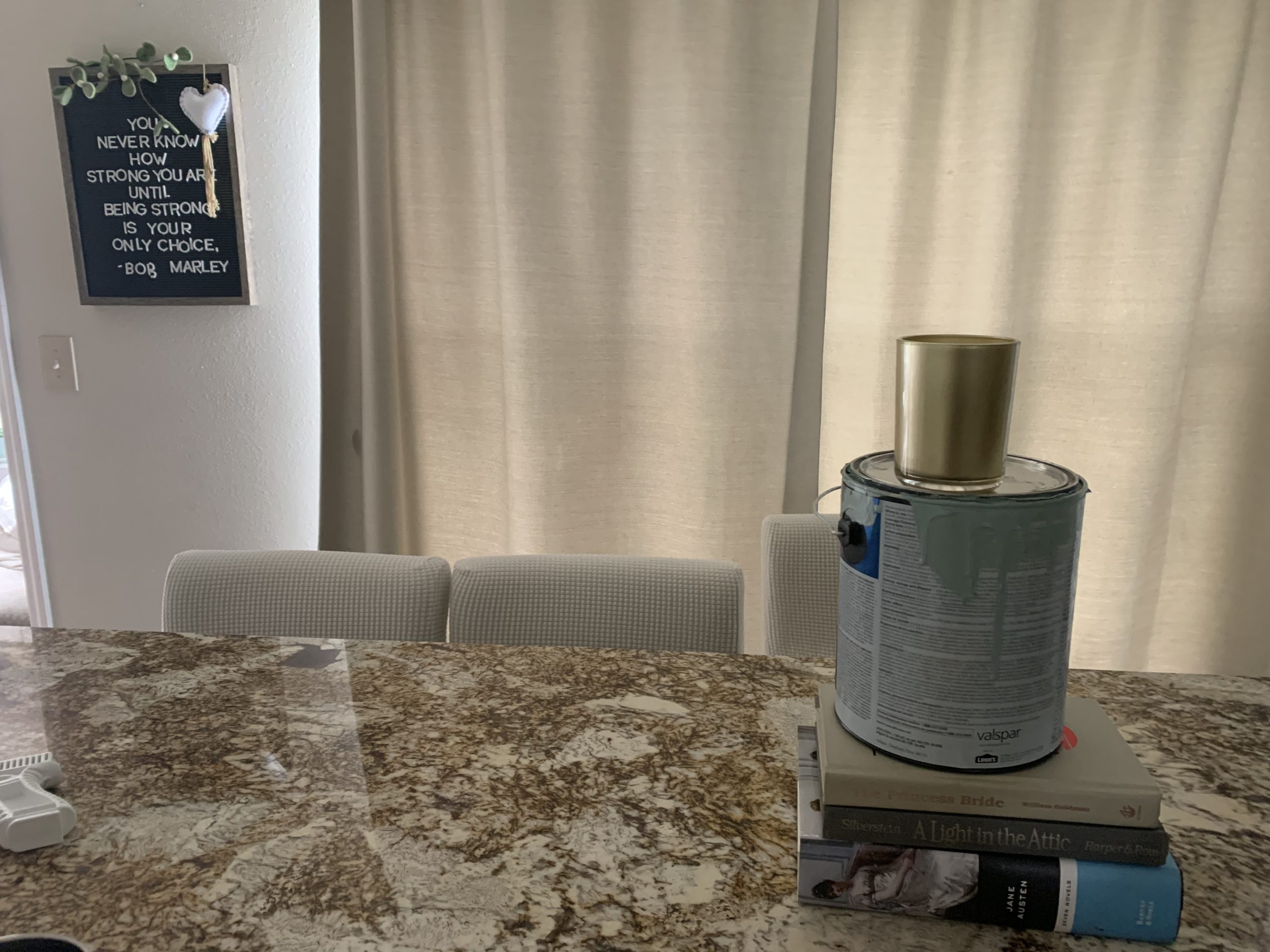
How are you adapting your home office to make it work for your work? What hacks are you discovering? What tricks can you share? Let me know, and send a pic, and I might use it here. Also, check out all these journalists making it work from home.
That’s it for me until Monday.
Unlock your jaw, lower your shoulders, roll your neck, and be well.
Kristen

